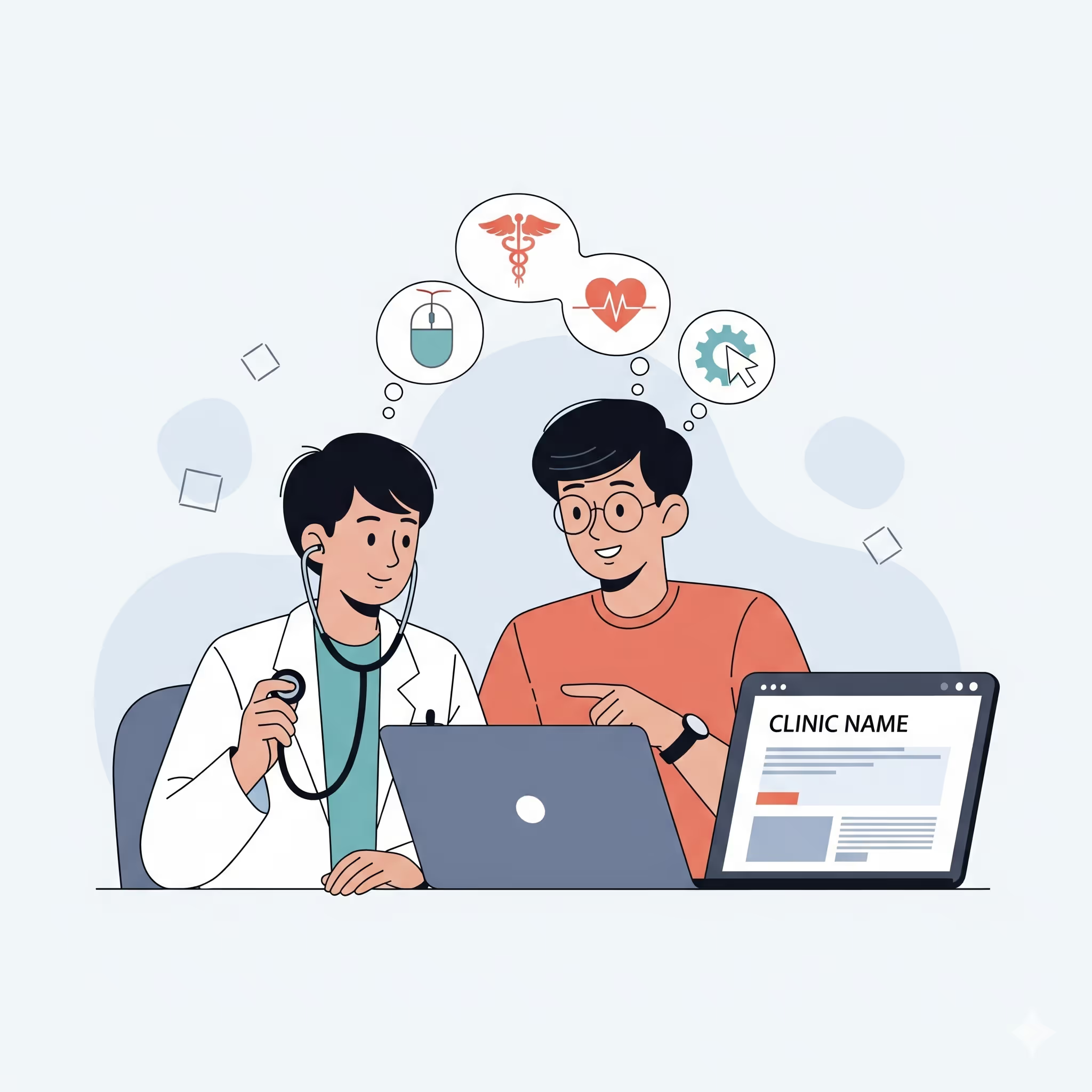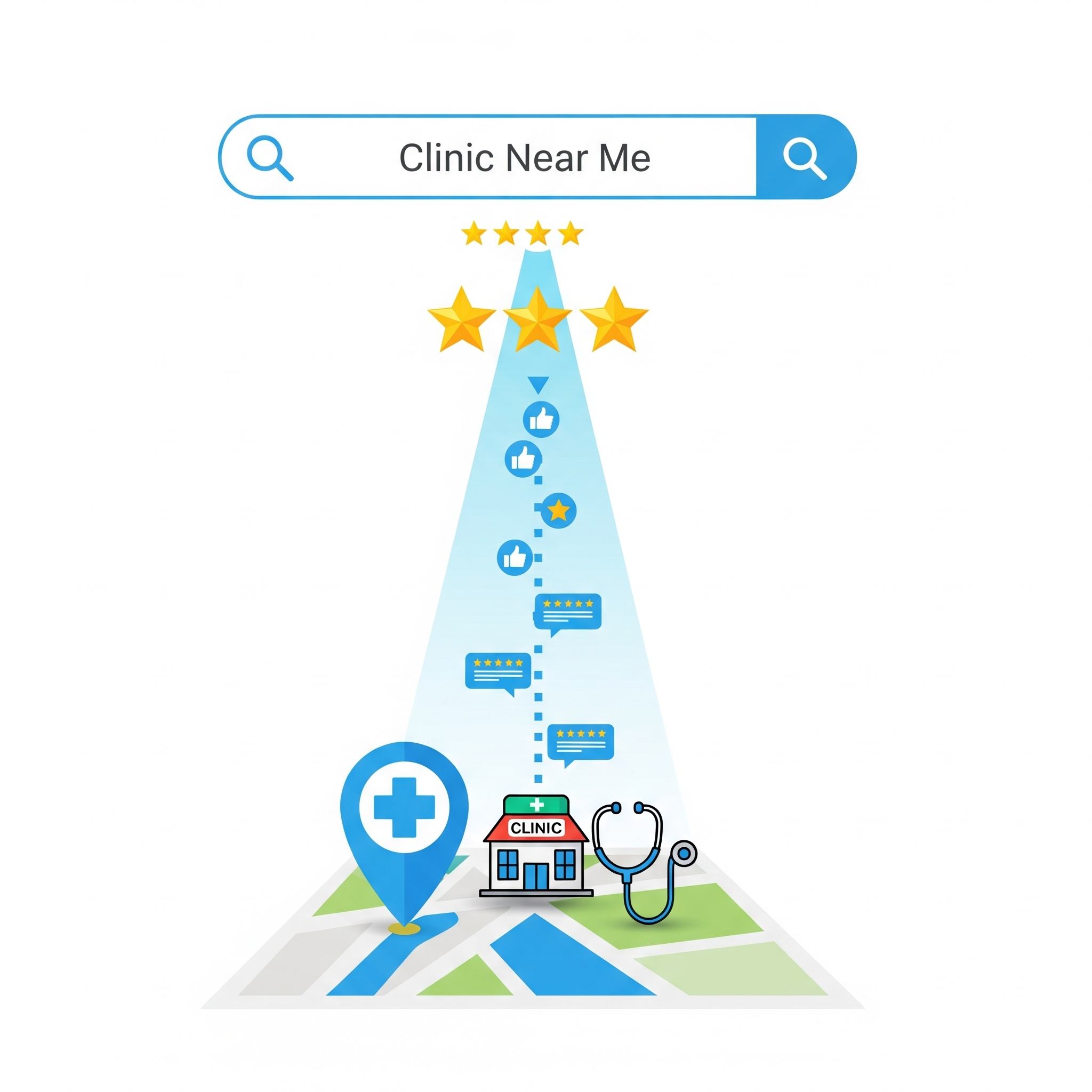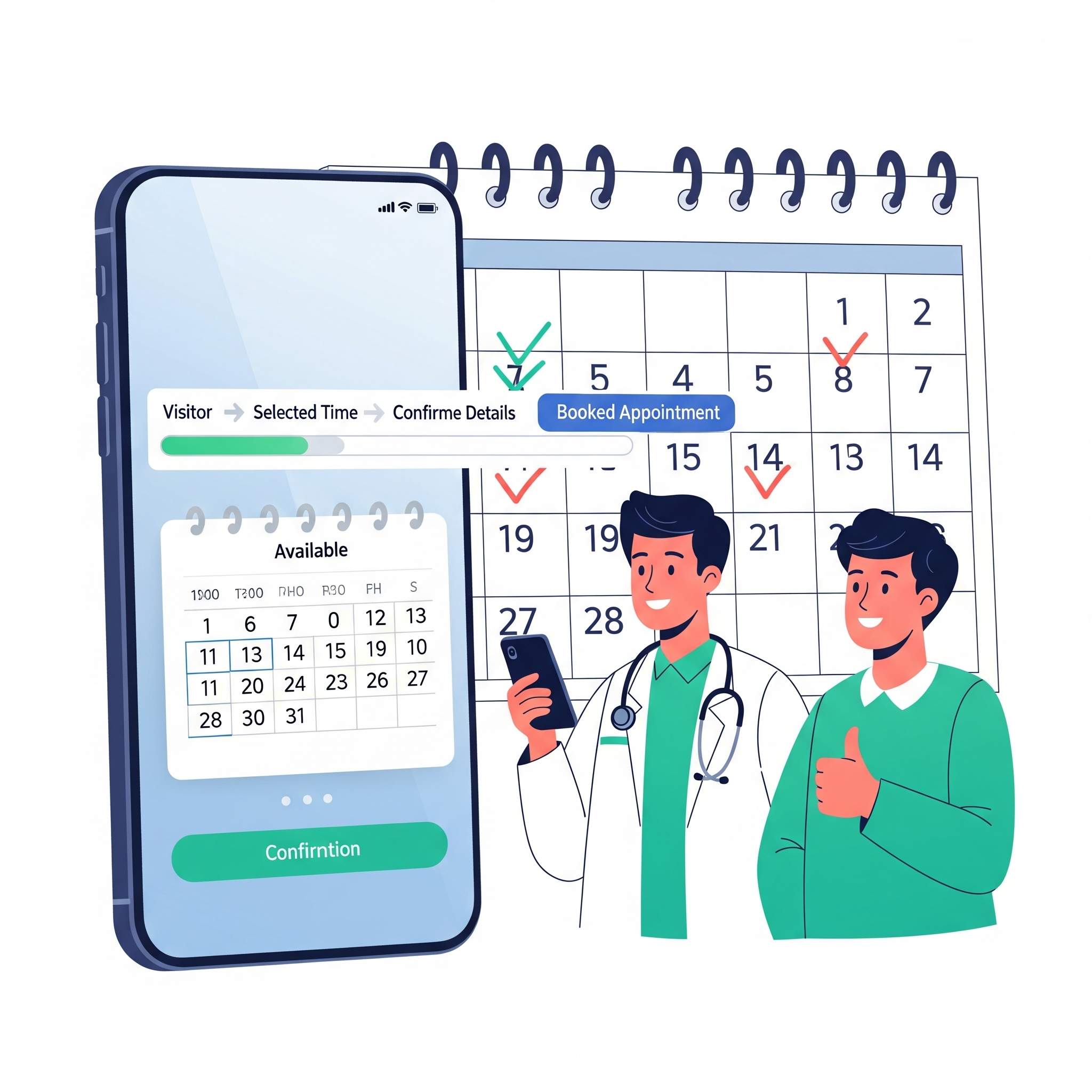Discover how clinics can dominate local search results with proven Local SEO strategies. Learn how to optimize for "dentist near me" searches and increase patient bookings.
"Why Medical Knowledge Matters for Clinic Website Design"

Introduction
Your clinic's website is not just a digital brochure—it's the first step in your patient acquisition journey. However, most clinic websites fail to convert visitors because they are designed by people who don't understand patient behavior. This disconnect between design and medical insight is a critical flaw that costs clinics patients every day.
In this guide, I'll show you how to transform your website from a simple landing page into a patient acquisition engine. We'll merge medical knowledge with digital marketing strategy to build a site that truly guides visitors from their initial symptom search all the way to a booked appointment.
How Patients Choose Providers (Based on Medical Training)
The Patient Decision Process:
- Research phase: Patients search symptoms, not medical conditions
- Comparison phase: They compare clinics based on trust signals
- Booking phase: They look for the easiest path to appointment
Data point: Data Point: Trustpilot found that 57% of consumers are more likely to buy from a website that has a positive review score, and 74% of patients say they will choose a provider based on their online reviews. This highlights that trust, which is built when a patient feels understood, is a key driver for conversion.(Trustpilot,Womply)
Medical Insight: Patients search for "back pain relief" not "physical therapy for lumbar strain." Your website should mirror patient language, not clinical terminology.
Action Step: Audit your service pages replace medical jargon with patient-friendly terms.
related : read our blog post "5 Hidden Website Mistakes Costing Your Clinic 20+ Patients/Month"
Patient Journey from Discovery to Booking
The Hidden Patient Journey:
- Discovery: Patients search symptoms on Google
- Research: They visit 3-5 clinic websites
- Evaluation: They look for trust signals (testimonials, credentials)
- Decision: They choose the clinic with the clearest path to booking
Data point : The average consumer today takes 3 to 5 hours to complete the research phase before making a purchase decision, proving that your clinic's digital presence must be compelling to capture their attention (WebStrategies, 2024).
Medical Insight: During clinical rotations, I observed that patients abandon websites when they can't find:
- Clear service explanations
- Insurance information
- Easy booking options
Action Step: Map your patient journey and identify where visitors drop off.
Ready to scale your clinic? Book a Free Website Audit
Why Generic Designers Miss Clinic-Specific Needs
Common Mistakes by Non-Medical Designers:
- Using "Contact Us" instead of "Book Appointment"
- Focusing on aesthetics over patient flow
- Ignoring HIPAA compliance requirements
- Not optimizing for mobile-first booking
Data Point: Over 62% of small businesses that hired a non-specialized agency to build their website experienced a major business problem as a result, from poor performance to expensive fixes later on (Clutch, 2024).
Medical Insight: Generic designers don't understand that patients need different information at different stages of care. For example, pre-surgery patients need detailed preparation instructions, while post-surgery patients need recovery guidance.
Action Step: Ask your designer: "Have you designed websites for clinics in my specialty?"
HIPAA Considerations for Clinic Websites
What Most Designers Get Wrong:
- Believing the entire website must be HIPAA-compliant (it doesn't)
- Using non-compliant contact forms
- Not signing Business Associate Agreements
- Storing patient data on-site
Data Point: Over 60% of small healthcare providers identify HIPAA compliance as a major challenge, and these practices were the subject of over 55% of the HIPAA fines levied by the HHS's Office for Civil Rights (OCR).(Healthcare Compliance Pros)
Medical Insight: As a medical student, I understand that:
- Patient intake forms must use HIPAA-compliant services (Calendly Healthcare, Jotform)
- You need BAAs with all integrated tools
- You should never store protected health information on your website
Action Step: Audit your website for HIPAA compliance using this checklist:
- All forms use HIPAA-compliant services
- BAAs are signed with integrated tools
- No patient data is stored on-site
- Privacy policy clearly explains data handling
Conclusion
Medical knowledge transforms your website from a digital brochure to a patient acquisition engine. When your website speaks the language of patients and understands their journey, you'll see more bookings and fewer empty appointment slots.
Ready to Transform Your Clinic’s Website?
Get a free 15-minute website audit to see how we can help your clinic fill appointment books, reduce no-shows, and convert more visitors into booked patients just like the clinics we’ve worked with.
Clinic website optimization guide
kindly insert your email below to recieve our Clinic website optimization guide explaining tips that can make your website super optimized to maximumize patient booking and patient aquisation







